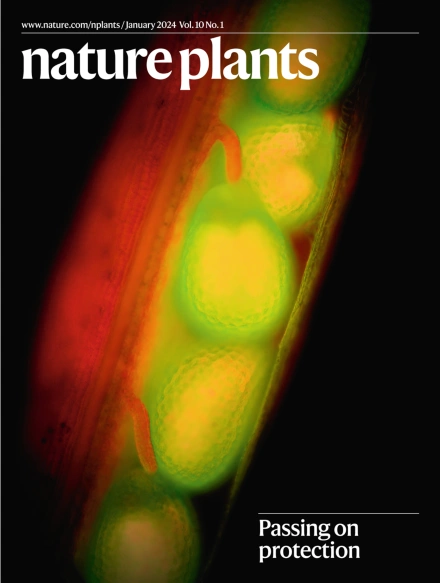液泡膜的atg8酰化保护植物免受细胞壁损伤
IF 15.8
1区 生物学
Q1 PLANT SCIENCES
引用次数: 0
摘要
液泡是细胞代谢、生长和维持内部胀压所必需的。它们隔离了裂解酶、离子和次级代谢物,如果泄漏到细胞质中,可能导致细胞死亡。尽管它们具有关键作用,但在植物中保护液泡完整性的质量控制途径仍然难以捉摸。在这里,我们描述了一个保守的液泡质量控制途径,在细胞壁损伤时以膨胀压力依赖的方式被激活。细胞壁扰动诱导液泡膜(液泡质体)发生明显的ATG8基化修饰,该修饰由v - atp酶和ATG8偶联机制调节。线粒体atg8化的遗传破坏破坏液泡完整性,导致细胞死亡。总之,我们的发现揭示了在细胞壁损伤时保持液泡完整性的稳态途径。本文章由计算机程序翻译,如有差异,请以英文原文为准。


ATG8ylation of vacuolar membrane protects plants against cell wall damage
Vacuoles are essential for cellular metabolism and growth and the maintenance of internal turgor pressure. They sequester lytic enzymes, ions and secondary metabolites that, if leaked into the cytosol, could lead to cell death. Despite their pivotal roles, quality control pathways that safeguard vacuolar integrity have remained elusive in plants. Here we describe a conserved vacuolar quality control pathway that is activated upon cell wall damage in a turgor-pressure-dependent manner. Cell wall perturbations induce a distinct modification—ATG8ylation—on the vacuolar membrane (tonoplast) that is regulated by the V-ATPase and ATG8 conjugation machinery. Genetic disruption of tonoplast ATG8ylation impairs vacuolar integrity, leading to cell death. Together, our findings reveal a homeostatic pathway that preserves vacuolar integrity upon cell wall damage. ATG8ylation of the tonoplast, triggered by cell wall damage, acts as a vital vacuolar quality control mechanism that safeguards vacuolar integrity and ensures cell survival under stress.
求助全文
通过发布文献求助,成功后即可免费获取论文全文。
去求助
来源期刊

Nature Plants
PLANT SCIENCES-
CiteScore
25.30
自引率
2.20%
发文量
196
期刊介绍:
Nature Plants is an online-only, monthly journal publishing the best research on plants — from their evolution, development, metabolism and environmental interactions to their societal significance.
 求助内容:
求助内容: 应助结果提醒方式:
应助结果提醒方式:


